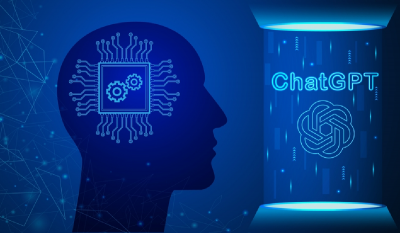IT operations have emerged with time. The amount of data involved in applications has increased tremendously, and many organizations process these data manually, using the old traditional methods designed decades ago. With constant availability and predictive insights, the emergence of Artificial Intelligence for IT operations (AIOps) has risen dramatically.
Gartner predicts that about 50% of enterprises use AIOps technologies with application performance monitoring (APM) that gives a clear view of business/mission-critical applications and IT operations. It also states that enterprises’ use of AIOps and digital experience monitoring software that tracks applications and infrastructure will rise to 30% in 2023 from 5%in 2018.
Businesses are rigorously adopting AIOps, and look at AIOps as practical and necessary elements for the next-generation IT solutions.
Why AIOps prove beneficial for businesses
1. Helps to process data in chunks
Several organizations face difficulties in operating a large amount of data and thus term it a key reason to not monitor events and systems powerfully in their environments. AIOps make it feasible for organizations to break down a large amount of data and help overcome their existing challenges.
AIOps come with multiple AI capabilities, depending on the amount of data available for monitoring and analyzing. The best way to perform it is to evaluate data and check for repeated occurring problems.
With AIOps, data is fed as logs, events, and metrics and is passed through a set of algorithms to select specific data points. After determining those data points, a correlation or particular set of patterns is recognized, and interference is drawn and later passed into a collaborative work environment.
2. Smoother customer experience
Maintaining a smoother customer experience with proper analytics is a significant business objective. AIOps is capable of making complex automated decisions by collecting and analyzing data. This data can predict future events that may affect availability and performance before it turns into a problem. Another advantage of AIOps is that it speeds up problem-solving and deployment processes.
3. Fills monitoring and analytics gap
Several monitoring tools make it difficult to arrive at results while quickly connecting and analyzing multiple application performance metrics to solve complex, emerging problems before affecting user experience. Data collection is the first step that enables AIOps to effectively analyze this data; collecting and correlating it through multiple sources is necessary.
AIOps and digital experience monitoring help deliver a primary and unanimous form of data analysis across all domains underlining the service, thus reducing the need to use multiple analysis tools.
When the staff is trained hands-on, an AIOps platform can effectively reduce IT engineer persons’ time and attention on mundane, routine, and everyday tasks. The IT staff introduces the AIOps platform, which then emerges with algorithms and machine learning, recycling knowledge gained over time to improve the software’s behavior and effectiveness further.
Business benefits of AIOps
A continuous increase in the adoption of AIOps reflects a dynamic change in IT operations. The following areas state how AIOps prove beneficial in different fields –
- Improvements in collaboration – AIOps make provision for better collaboration and workflow activities within IT groups and between IT and other business units. Generating a customized report and dashboards can help teams understand their tasks and requirements in a broader way.
- Improvements in businesses for ROI (Return on Investment) IT productivity – Businesses have witnessed considerable improvements by decreasing mean time to repair through preventing outages by predicting incidents and removing manual tasks through automation. AIOps help in optimizing the overall capacity of a team by increasing output and cost reduction.
- Successful digital transformation – While attending digital transformation, companies are grilled through various challenges. An organization looking for a digital-centric approach, AIOps adds to business value by saving team members’ time and effort focusing on innovation.
- Improvement in performance monitoring and service delivery – AIOPs can easily predict forecasts resource utilization and performance issues. It focuses mostly on the likely source of a problem by applying probable cause of analytics. Thus, it helps in identifying the actual problems driving incidents by using clustering and anomaly detection.
Machine learning, AI, and automation can help to lighten or relatively eliminate the support team’s burden by assessing user interaction patterns, practices, support tickets, and information about user interaction.
Idealizing AIOps for a better future
AIOps is continuously disrupting IT operations and will continue to do it. Technology today focuses on eliminating problems, cutting costs, improving customer experience, and reducing the IT team’s burden looking forward to tech innovations. It tremendously increases IT’s strategic importance and visibility for the businesses trying to improve data performance and availability, no matter how complex the environment becomes.
The development of AIOps shows emerging trends in digital information that has brought applications and services together. What makes IT a valuable business asset is a business application, service, and exchanges depending on the digital infrastructure.
AIOps enable IT teams to get deeper into the infrastructure to help a business stay competitive and meet customer demands. AIOps functionality is now successfully implemented. AIOps’ success has been such that Gartner research states that AIOps functionality is increasingly applied to use cases beyond solely monitoring. Businesses are now focusing on improving ticketing processes, CMDB (configuration management database) capabilities, and automation as an interface between development and production, thus demonstrating the effectiveness and potential of these processes.














